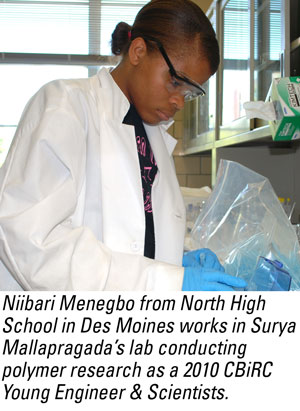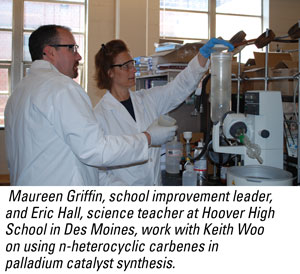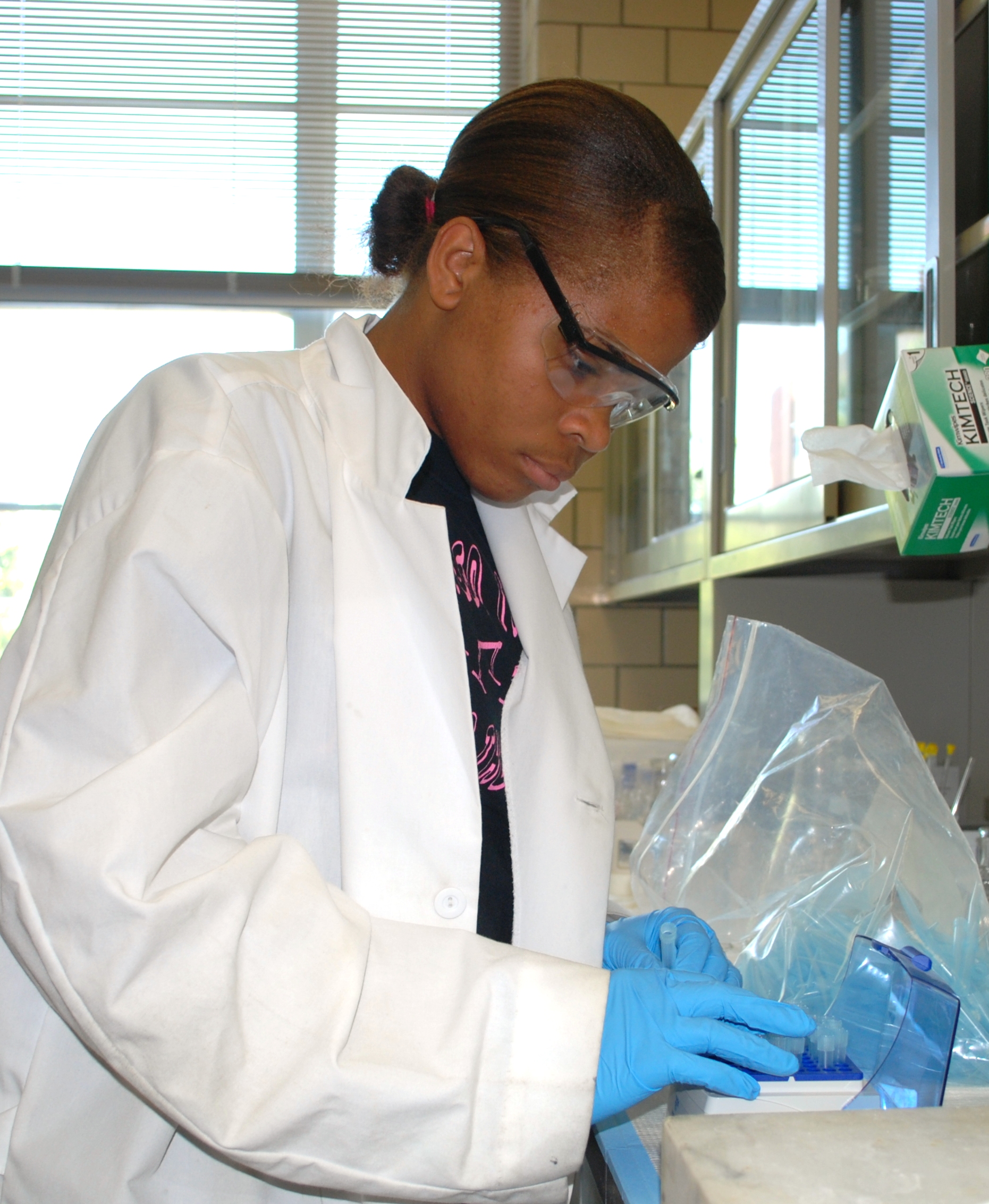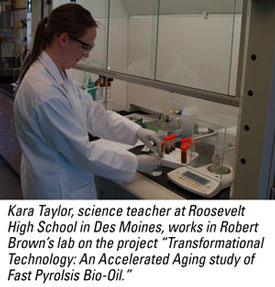The National Science Foundation (NSF) Engineering Research Center for Biorenewable Chemicals (CBiRC) based at Iowa State University brings together researchers from across the world to reduce our reliance on fossil carbon sources and build a foundation for a more sustainable future based on biorenewable resources.
While these ideas and advancements will transform the chemical industry, Brent Shanks, director of the center, is committed to involving the center in meaningful collaborations with pre-college entities, engaging K-12 students in science, technology, engineering, and mathematics (STEM) and the role these fields have in solving global challenges.
“There is a general acknowledgement in our country that our STEM education is not accomplishing what we want,” Shanks said. “We need to find a way to integrate more inquiry-based and problem-solving learning in classrooms at a young age, and with this research center, we have the vehicle to do just that.”
Collaborative partnership and new approach
 Included with the funding for research CBIRC receives from NSF is the expectation that the center will support STEM education programs at the pre-college level, and consequently attract students to STEM fields as they continue their education and decide on careers. Guided by this directive, the leaders of CBiRC embraced the opportunity to partner with high-need school districts in Iowa by offering support to enrich STEM content in the classrooms.
Included with the funding for research CBIRC receives from NSF is the expectation that the center will support STEM education programs at the pre-college level, and consequently attract students to STEM fields as they continue their education and decide on careers. Guided by this directive, the leaders of CBiRC embraced the opportunity to partner with high-need school districts in Iowa by offering support to enrich STEM content in the classrooms.
“Science is as exciting as the person who is teaching it,” Shanks said. “If you have someone teaching the subject without the proper background, they don’t have the tools to make it interesting. Through our programs we want to energize teachers and give them some tangible ways to energize students.”
The center has adopted a comprehensive approach to its pre-college programs, working closely with its main partner, the Des Moines Public Schools District (DMPSD), to develop educational programs that will benefit both teachers and students. This approach focuses on key elements that connect various groups of people extending from K-12 communities, higher education, scientific research, and industry with a common goal—developing the green-collar workforce for the 21st century.
Wide-reaching educational programs
In the past two years, CBiRC pre-college programs have impacted more than 3,210 K-12 students from DMPSD—approximately 1,260 high school, 1,650 middle school, and 300 elementary school students. CBiRC’s Research Experiences for High School Teachers (RET), a seven-week experience, and Summer Academy for Secondary School Teachers, a four-week experience, introduce educators to the value of scientific inquiry and give them tools and experiences to share with their students. Most importantly, CBiRC recognizes that changes can only be made with full support from the teachers. “Connecting to real research was invaluable as an experience … learning new techniques and experiencing science in a new way has allowed me to bring ideas back to the classroom,” said CBiRC high school teacher Kara Taylor, who is from Roosevelt High School in Des Moines.
Seeing the impact
CBiRC’s influence is already starting to make its way to Iowa State’s College of Engineering. Miya Williams, a freshman in chemical engineering and German, was a student at East High School when she took an advanced chemistry course taught by Maureen Griffin, a participant in CBiRC’s RET program.
Williams, who enjoyed math and science in middle school, was encouraged by friends to take Griffin’s course because she was a great teacher. “I’m so glad I took it,” she said. “There were a lot of hands-on projects and lab work that I really liked—her teaching really made a difference in how I learned advanced chemistry. Ms. Griffin was the one who encouraged me to come to Iowa State.”

Griffin, who now is a school improvement leader at Hoover High School, works with the science department to improve curriculum and help each teacher increase student engagement and appreciation of science. As a teacher at East High, she participated in the research experience to help advance as an educator in the classroom and connect with her colleagues at the high school and college level.
“The future of this nation depends on creating thinkers and problem solvers within these areas of science,” Griffin said. “If we can catch kids in middle school and keep their interest in high school, we may just be able to resolve some serious issues we face with our environment as well as with our economy.”
In her new role, Griffin is sharing successful teaching approaches with her peers, helping them integrate new techniques into their science classrooms. She used the stipend she received as a participant in CBiRC’s program to purchase new lesson plans for biology teachers at Hoover, resulting in a benefit for more than 300 students.
“The program at CBiRC is amazing,” she said. “Teachers, students, researchers, and professors are joining forces with industry and being challenged in a way that no one has even imagined. The vision of this project has the ability to make real changes in how we educate kids, teachers, and even college research assistants.”
Moving the momentum forward
CBiRC plans to continue to develop the partnership it has with Des Moines schools, evaluating and assessing what works well within the pre-college programs, with hopes to extend the influence of its program more broadly in the future.
“With our pre-college programs, we have the potential to do something that has a real, lasting impact, and we are already starting to see results,” said Adah Leshem-Ackerman, CBiRC’s pre-college education program director. “Training teachers and helping them understand the type of workforce we are looking for in STEM fields can play an important role in building future economic growth.”

